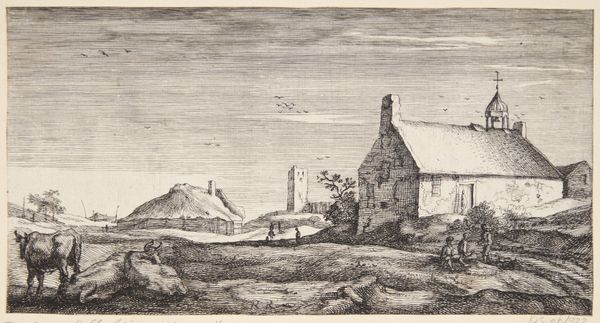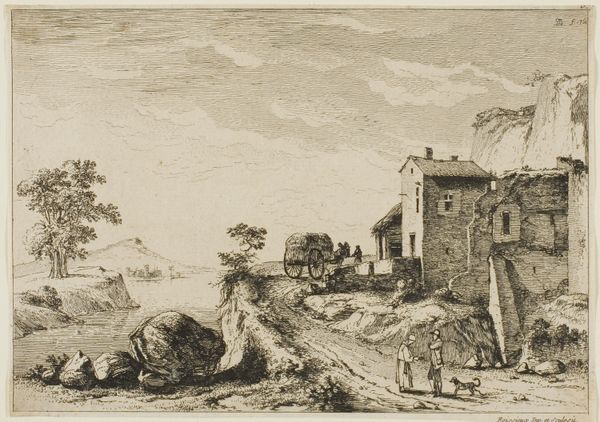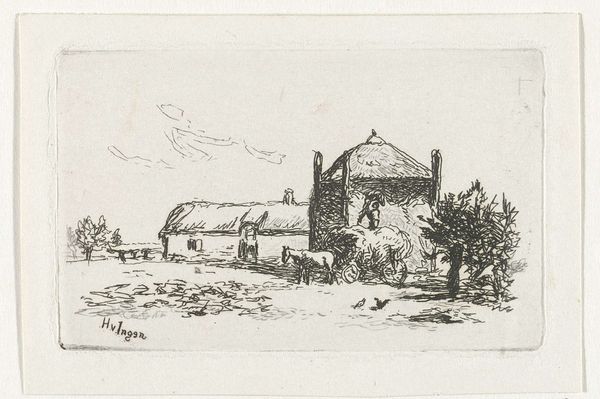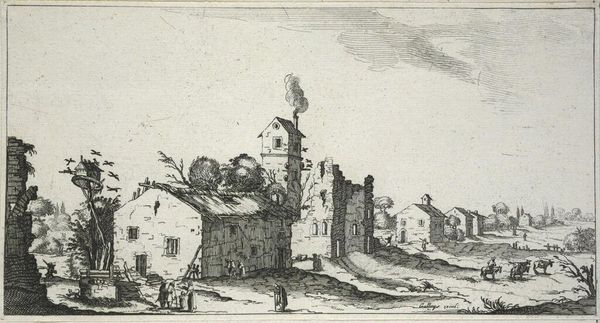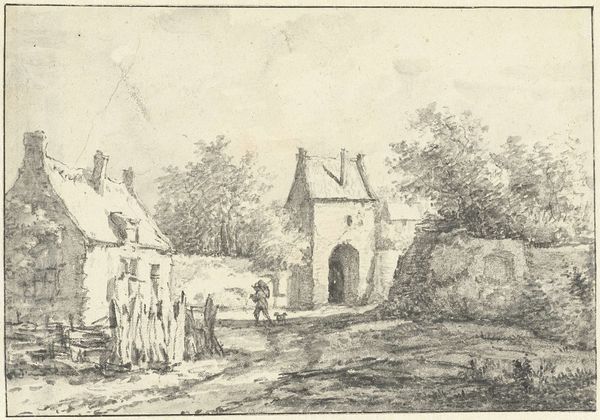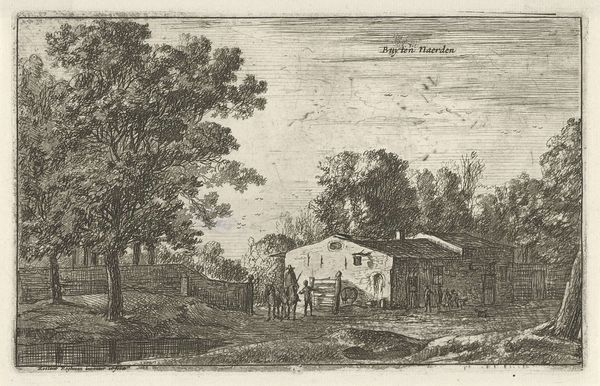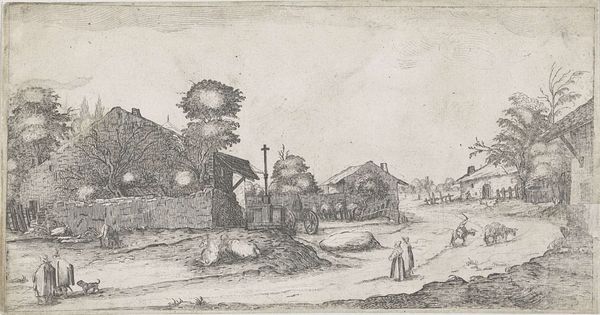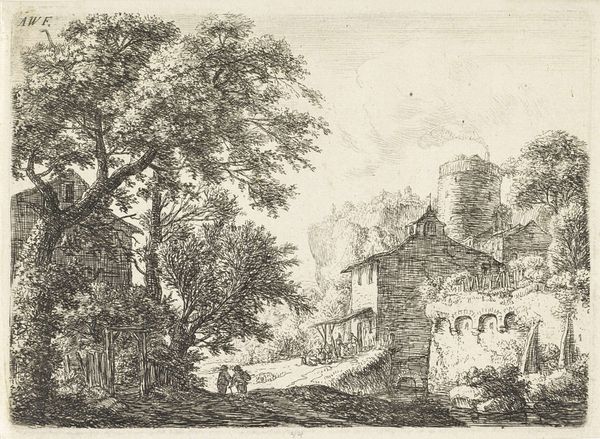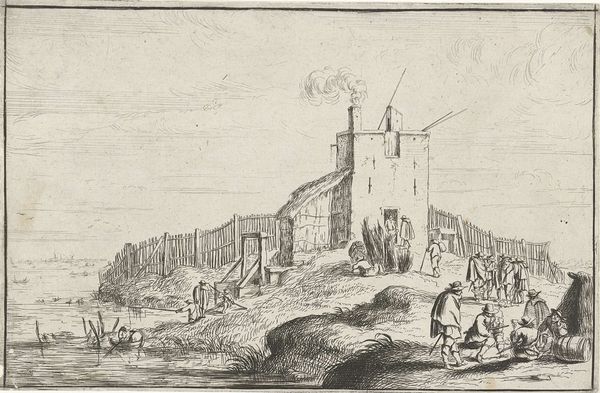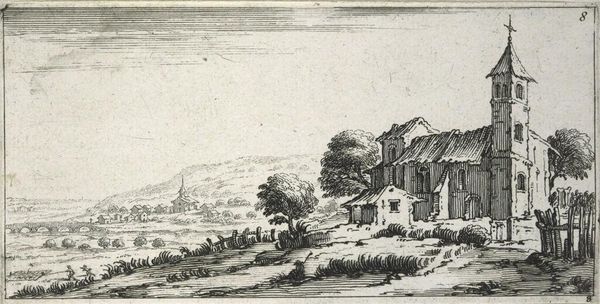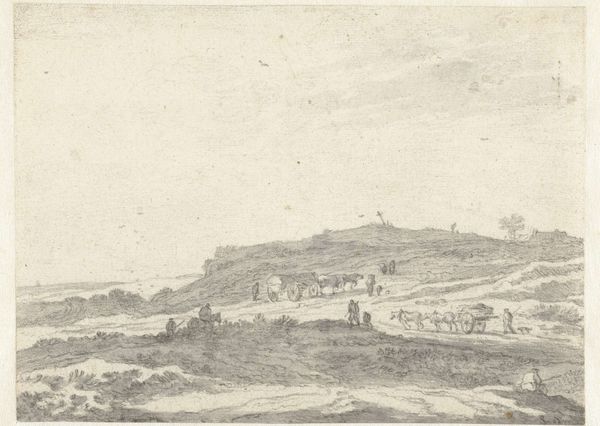
print, etching
#
baroque
# print
#
etching
#
landscape
Dimensions: height 111 mm, width 211 mm
Copyright: Rijks Museum: Open Domain
François Collignon created this landscape with church and man with wheelbarrow sometime in the 17th century, using etching techniques. The artist incised lines into a metal plate with a sharp needle, then bathed it in acid. This process eats away at the exposed lines, creating grooves. Ink is then applied to the plate, filling these grooves, and the surface is wiped clean. Finally, paper is pressed against the plate, transferring the image. What is compelling here is how Collignon used the graphic language of etching to depict the textures of everyday life. See how the etched lines delicately define form, volume, and surface? You can almost feel the rough stone of the dilapidated buildings, the weight of the wheelbarrow, and the vastness of the landscape. This attention to material reality brings a sense of dignity to the common laborer, and asks us to consider the relationship between people, place, and the work that sustains them. It's a reminder that even the humblest materials and processes can yield profound artistic expression.
Comments
No comments
Be the first to comment and join the conversation on the ultimate creative platform.
